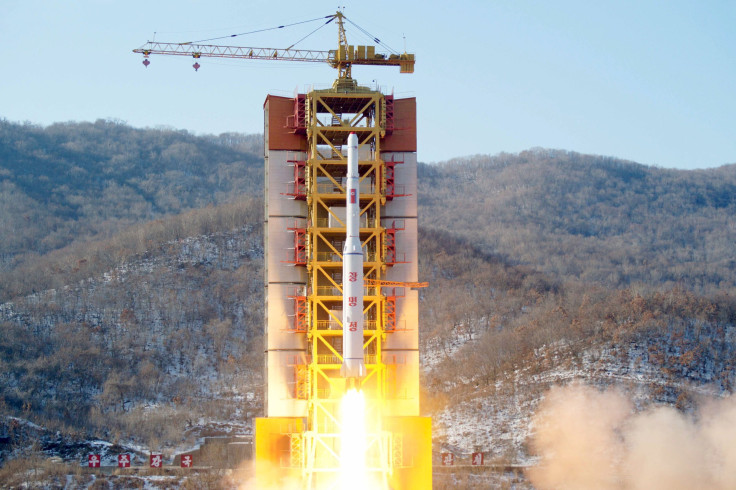North Korea Launches Rocket Capable Of Delivering Nuclear Warhead Ahead Of Earliest US Prediction

UPDATE: 9 a.m. EST — NATO head Jens Stoltenberg Sunday called North Korea's rocket launch “a direct violation” of five U.N. Security Council resolutions and demanded Pyongyang comply with international law.
“NATO continues to call on the North Korean authorities to comply with their obligations under international law, not to threaten with or conduct any launches using ballistic missile technology and to refrain from any further provocative actions,” Stoltenberg said.
North Korea has been condemned for recent missile tests, seen as tests of ballistic missile technology, Agence France-Presse reported. Stoltenberg noted North Korea has been asked repeatedly to end its ballistic missile program.
Original Story:
North Korea fired a long-range rocket carrying what it said was an Earth observation satellite, South Korea's defense ministry said. The Sunday morning (local time) launch came after warnings from international governments that North Korea was actually preparing to test ballistic missile technology, banned by the United Nations, under the guise of a satellite launch.
A senior U.S. defense official told CNN Saturday he could “confirm that we have detected a missile launch from North Korea. Based upon its trajectory as we are tracking it, it does not pose a threat to the U.S. or our allies. We will have more updates soon.”
U.S. officials added that the type of rocket used to launch the satellite could fire a nuclear warhead, though North Korea previously told United Nations agencies it was planning to launch a surveillance satellite between Feb. 8 and Feb. 25. North Korea moved that window up by a day Saturday without explanation, though Fox News speculated the launch was moved up to beat inclement weather.
U.S. officials previously said North Korea would be ready to launch a satellite by kickoff on Super Bowl Sunday, which would be Monday in East Asia. Commercial satellite images, dated Feb. 3 and Feb. 4, and cited by Reuters, showed that tanker trucks were present near the North Korea launch pad. Traditionally, that would indicate that tanks within bunkers at the site were being fueled, though the tanks could have been fueling rockets in this case.
“In the past, such activity has occurred one to two weeks prior to a launch event and would be consistent with North Korea's announced launch window,” 38 North, a North Korea monitoring project based in Washington, told Reuters.
The launch comes after the news that the U.S. Congress was preparing to approve new sanctions on North Korea that would impact Chinese companies. The penalties would target North Korean trading partners believed to be involved in the country's nuclear weapons program and cyberwarfare operations. The sanctions have not been finalized, and could be waived by a presidential veto, though they might further complicate Washington's relations with Beijing if approved.
© Copyright IBTimes 2024. All rights reserved.





















